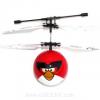- 1 reply
- 1,290 views
- Add Reply
- 7 replies
- 3,871 views
- Add Reply
- 3 replies
- 3,266 views
- Add Reply
- 4 replies
- 9,237 views
- Add Reply
- 0 replies
- 1,528 views
- Add Reply
Issues related to lack of Landsat 8 Metadata usage in Grass GIS i.landsat.toar run
By iat7b,
Computer Basics: Data Used: Landsat 8; Operating System: Windows 7 32 bit; Grass version: 7.0.0.1 (Stable version) I have tried with 7.02.RC1-1 version, landsat 7 data, but there was no difference)
My metadata file records the following values:
SUN_ELEVATION = 49.52284282 EARTH_SUN_DISTANCE = 0.9939432
Also,
RADIANCE_MULT_BAND_1 = 1.2709E-02 RADIANCE_ADD_BAND_1 = -63.54622 Similarly, none of the other band's radiance parameter is zero
Issue # 01: The code is not picking up the Earth-
Sat night imagery

By intertronic,
Hello,
does anyone knows a satellite taking pictures at night with an archive catalog?
ideal is a satellite like AQUA or TERRA taking imagery every day.
regards
M.
TMS in Google Earth
By stefafanonafets,
Hello everybody!
I'd like to see some TMSs in Google Earth, for example this:
http://www.sardegnageoportale.it/index.php?xsl=1598&s=203640&v=2&c=9875&t=1
Maybe it could be helpful this other page:
http://webgis.regione.sardegna.it/manuali/roja/index.php?cat=10v
Thanks in advance!
Stefano.
Android app for viewing shapefiles
By mokukk,
I'm looking for a simple Android app allowing viewing shapefiles offline. Doesn't need to have any editing features, only shp viewer and GPS capabilities. What would be your recomendations for this kind of app?
Civil Engineering Journal: Call for Papers (www.CivileJournal.org))
By civilejournal,


Civil Engineering Journal is a multidisciplinary, an open-access, internationally double-blind peer -reviewed journal concerned with all aspects of civil engineering, which include but are not necessarily restricted to:
Building Materials and Structures, Coastal and Harbor Engineering, Constructions Technology, Constructions Management, Road and Bridge Engineering, Renovation of Buildings, Earthquake Engineering, Environmental Engineering, Geotechnical Engineering, Highway Engineering, Hydrauli
-
Forum Statistics
8.7k
Total Topics43.4k
Total Posts






